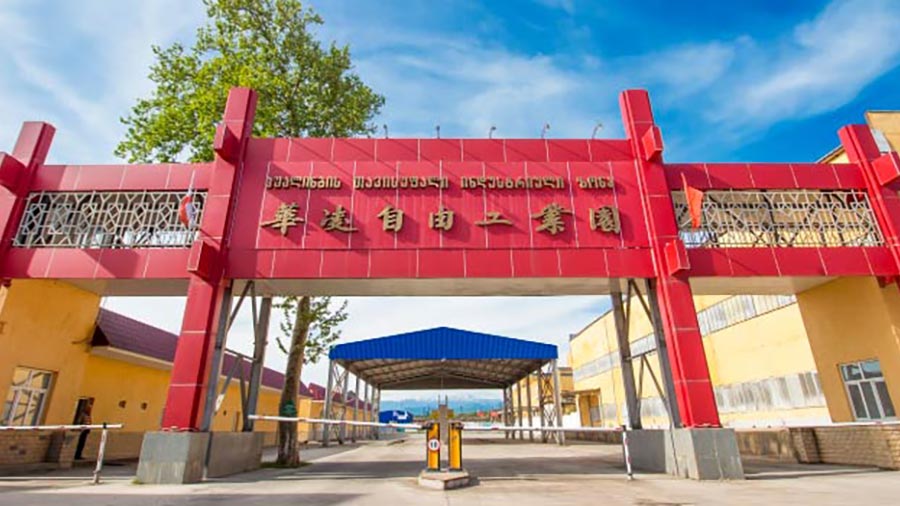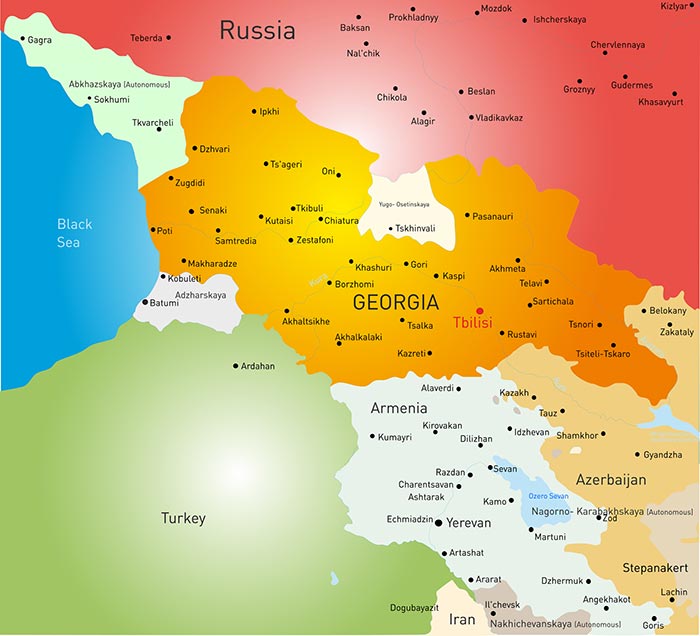Georgia’s Belt And Road Initiative – Accelerating Trade Between Central Asia And Europe

The Hualing Free Industrial Zone is providing added value production to Asian goods destined for European and North American markets
Azerbaijan and Georgia play key roles within the framework of China’s Belt & Road Initiative, Soso Nibladze, the CEO of the Hualing Free Industrial Zone (FIZ), has stated. The zone is based in Kutaisi and is an important connecting hub between Tbilisi (the capital of Georgia) and Georgia’s Black Sea Ports of Poti and Batumi.
Hualing FIZ was built by Hualing Group with Chinese investments and began operating in 2015. Despite the COVID-19 pandemic, Hualing FIZ was able to increase its investor client base in 2021 with 25 new companies registered during the past year.
“One of the most important initiatives of 2021 was a project related to wood processing and furniture production, developed together with investors from Canada and China. This project provides for the production at the FIZ and further export.” Niblaze stated.
Nibladze said the initial budget for this project was US$1.5 million, and in general, it is planned to increase it to US$7 million.
Further investment into the zone is expected shortly, with a Chinese company to start the production and export of ferroalloys and silicon metal at the Hualing FIZ. The total volume of the investments amounted to US$5 million, and it is also expected to increase this as the business develops. Nibladze also pointed to a recycled plastic project, launched at the FIZ in 2021. Investments in this project amounted to about US$2 million.
He said Hualing FIZ conducts most of the negotiations with manufacturers of the light industry sector. One of these is a German investor, dealing with the production and export of textile products. Nibladze said the negotiations on this project (signing the contract) are at the final stage.
“About 2,000 people will be employed once the project is launched, and the total investment in it is about €3 million”
Among the projects in the green energy field, Hualing FIZ has attracted solar panel production – and the largest project in this sector in the European-Caucasus region. The total investment for this project has reached US$10 million, with the exports mainly for the North American market.
According to Nibladze, the Hualing FIZ now has 90 resident companies, of which 70% are in trading, 25% in manufacturing and 5% in the services sector. This success is expected to lead to an agreement with the Georgian government to expand the zone’s territory to 58 hectares, up from the existing 36 hectares. There are additional prospects to expand the FIZ to 200 hectares.
The main export destinations for goods manufactured or traded at Hualing FIZ are the South Caucasus and Central Asia, the European Union, North America, and Mexico. The FIZ closely cooperates with investors from Azerbaijan, whose Baku Port to the east, on the Caspian Sea connects with Central Asia, Iran and the INSTC route to India.

“Many Azerbaijani companies expressed their interest in cooperation with Hualing FIZ, mainly companies involved in the pharmaceutical, manufacturing, and construction sectors” Nibladze stated.
“There are bottleneck issues in global logistics that will continue to be problematic, but at the same time, we expect that there will be a great demand for exports to regional countries.” he said. There have been problems with the Baku-Tblisi-Kars railway connection through to Turkey and Europe with the proposed route and investment now looking to be something of a White Elephant given the changes presented as a result of the 2020 Azerbaijan-Armenia conflict and Georgian Government policy. The BTK has yet to carry a single passenger; the start of passenger services in 2020 was truncated by the Georgian government banning foreign visitors (even if they didn’t get off the train). Cargo services on the 800-odd kilometres from Kars to Baku via Georgia take about three days, meaning its not the high-speed line it was initially promoted as. Additional hold ups take place due to train gauge changing as the BTK crosses into Georgia. The Georgian Government are currently wondering why they donated so much territory for the construction of the BTK through Georgia; with Covid meaning no tourists, very little delivery of raw materials for their manufacturing industries, and no substantial exports of Georgian goods either to Central Asia or Turkey on the train, although this may be alleviated when the pandemic has calmed down.
The Caspian-European BTK transit issues aside, the development of Chinse and locally invested Free Trade and Industrial zones along the Belt and Road Initiative is a primary example of the BRI moving from being an infrastructure investment play to being a cashflow generator based on that initial investment. This means that while critics may point to a slow-down of overall Chinese investment in overseas financing, investors along the BRI – such as the Hualing FIZ – can now generate profits and help their own invested clients manufacture and trade. BRI infrastructure investment is now showing up with the end result being increased trade turnover and exports, with the ultimate success measurement of BRI infrastructure investments to be measured in this increased capability rather than the project financing.
Related Reading
About Us
Chris Devonshire-Ellis is the Chairman of Dezan Shira & Associates. The firm assists British and Foreign Investment into Asia and has 28 offices throughout China, India, the ASEAN nations and Russia. For strategic and business intelligence concerning China’s Belt & Road Initiative please email silkroad@dezshira.com or visit us at www.dezshira.com





